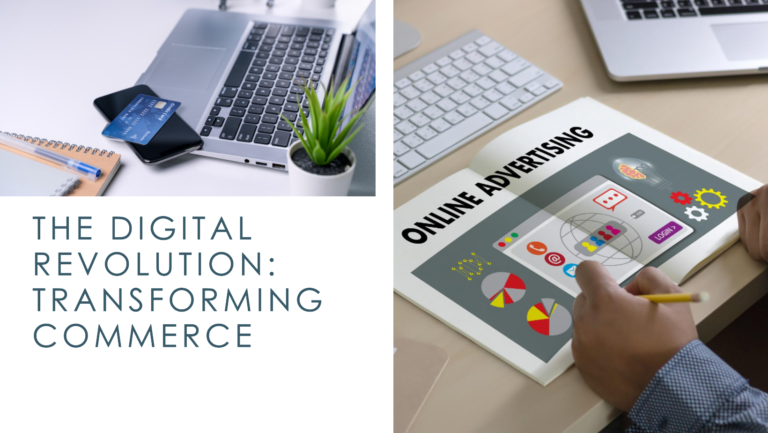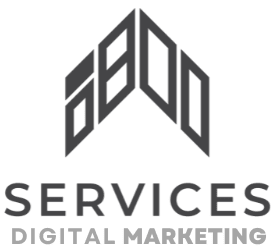The Role of Digital Marketing Technologies in Today’s Landscape:
1. Artificial Intelligence (AI)
- Definition: Artificial Intelligence (AI) involves using computer systems to perform tasks that typically require human intelligence, such as data analysis, personalization, chatbots, and predictive analytics.
- Need: Businesses use AI to analyze vast amounts of data quickly, personalize user experiences, automate customer interactions through chatbots, and make predictions that inform marketing strategies, ultimately enhancing efficiency and user satisfaction.
2. Virtual Reality (VR)
- Definition: Virtual Reality (VR) creates immersive digital environments that users can explore, making it ideal for product demonstrations, virtual tours, and interactive storytelling.
- Need: Businesses leverage VR to offer consumers engaging and memorable experiences, allowing them to virtually interact with products or services, fostering a deeper connection and understanding.
3. Augmented Reality (AR)
- Definition: Augmented Reality (AR) overlays digital elements onto the real world, enhancing user experiences. This can include AR filters, try-on features, and interactive ads.
- Need: Businesses adopt AR to create interactive and entertaining experiences for users, allowing them to visualize products in their real environment, try before buying, and engage with brands in innovative ways.
4. Machine Learning
- Definition: Machine Learning involves using algorithms to analyze large datasets, automate tasks, and optimize marketing campaigns based on user behavior and patterns.
- Need: Businesses apply machine learning to gain insights from data, automate repetitive tasks, and deliver personalized experiences by understanding and predicting user preferences.
5. Voice Search Optimization
- Definition: Voice Search Optimization involves adapting content and ads to be easily discoverable through voice-activated devices like smart speakers and voice assistants.
- Need: With the rise of voice-activated technology, businesses optimize their online presence to ensure their content is accessible and relevant to users relying on voice commands for search.
6. Chatbots and Conversational AI
- Definition: Chatbots and Conversational AI use artificial intelligence to provide instant customer support, answer queries, and guide users through the sales funnel via chat interfaces.
- Need: Businesses implement chatbots to enhance customer service, provide immediate responses, and create a more interactive and seamless user experience.
7. Blockchain Technology
- Definition: Blockchain Technology enhances transparency, security, and trust in digital advertising, influencer marketing, and customer data management by creating decentralized and tamper-resistant ledgers.
- Need: Businesses utilize blockchain to build trust by ensuring the integrity of data, preventing fraud in digital advertising, and enhancing security in transactions and data handling.
8. Internet of Things (IoT)
- Definition: Internet of Things (IoT) involves connecting devices to the internet to collect and analyze data, enabling personalized marketing experiences based on user behavior.
- Need: Businesses leverage IoT to gather real-time data from connected devices, offering personalized services, improving user experiences, and optimizing marketing strategies.
9. Predictive Analytics
- Definition: Predictive Analytics uses historical data and machine learning to predict future customer behavior, optimize campaigns, and deliver personalized messaging.
- Need: Businesses employ predictive analytics to anticipate customer preferences, streamline marketing efforts, and enhance user engagement by tailoring content and offers.
10. Programmatic Advertising
- Definition: Programmatic Advertising automates the buying and selling of ad inventory using AI and data-driven algorithms to target specific audiences more efficiently.
- Need: Businesses turn to programmatic advertising to optimize ad placements in real-time, reaching the right audience with the right message and maximizing the efficiency of their ad spend.
11. 5G Technology
- Definition: 5G Technology enables faster internet speeds and seamless connectivity, unlocking new possibilities for real-time marketing, live streaming, and interactive experiences.
- Need: Businesses capitalize on 5G to provide smoother and faster digital experiences, particularly in areas like live streaming, augmented reality, and other data-intensive applications.
12. Biometric Technology
- Definition: Biometric Technology uses unique physical or behavioral characteristics, such as facial recognition or fingerprint scanning, for personalized experiences, security, and targeted advertising.
- Need: Businesses adopt biometric technology to enhance security, create personalized user experiences, and deliver targeted advertising based on individual characteristics.
13. Wearable Technology
- Definition: Wearable Technology includes smartwatches, fitness trackers, and other devices, offering opportunities for delivering personalized content, ads, and health-related marketing.
- Need: Businesses engage with wearable technology to reach users in more personal and context-aware ways, tailoring marketing messages and services based on users’ health and activity data.
14. Data Analytics and Visualization Tools
- Definition: Data Analytics and Visualization Tools help businesses gain insights, track performance, and make data-driven decisions through advanced analytics and visual representations of data.
- Need: Businesses use these tools to understand complex data, identify trends, and communicate insights effectively, empowering better decision-making in marketing strategies.
15. Influencer Marketing Platforms
- Definition: Influencer Marketing Platforms streamline influencer discovery, collaboration, and performance measurement, providing a centralized hub for managing influencer marketing campaigns.
- Need: Businesses leverage influencer marketing platforms to identify suitable influencers, manage partnerships efficiently, and measure the impact of influencer campaigns on their brand.
16. Geolocation Technology
- Definition: Geolocation Technology uses location data to deliver targeted ads, personalized offers, and location-based marketing campaigns based on a user’s physical location.
- Need: Businesses employ geolocation technology to enhance the relevance of their marketing efforts, offering personalized experiences and promotions based on a user’s real-world location.
17. Gamification
- Definition: Gamification integrates game-like elements into marketing strategies to engage and motivate users, using challenges, quizzes, rewards, and interactive content.
- Need: Businesses adopt gamification to make their marketing more interactive, entertaining, and rewarding, encouraging user participation and fostering a connection with the brand.
18. Personalization Engines
- Definition: Personalization Engines use AI and machine learning to deliver highly personalized content, recommendations, and offers to individual users based on their preferences and behavior.
- Need: Businesses implement personalization engines to create tailored user experiences, increase engagement, and drive conversions by delivering content and offers that resonate with each user.
19. Image and Video Recognition
- Definition: Image and Video Recognition use AI-powered algorithms to analyze and recognize images and videos, enabling advanced applications like facial recognition and content categorization.
- Need: Businesses apply image and video recognition for enhanced security, content organization, and personalized experiences, such as recognizing and recommending products from images.
20. Emotion and Sentiment Analysis
- Definition: Emotion and Sentiment Analysis use AI and natural language processing (NLP) to analyze and understand user emotions and sentiments expressed in text, social media, and customer feedback.
- Need: Businesses leverage emotion and sentiment analysis to gauge customer reactions, tailor marketing messaging to emotional cues, and enhance customer experiences based on their sentiments.
Transform with Digital Excellence!
As of December 2023, a report shows that 91% of businesses are actively involved in various digital initiatives, and 87% of senior business leaders consider digitalization a top priority. Additionally, 89% of companies have either already implemented a digital-first business strategy or have intentions to do so.

The problem
In this digital age, businesses often struggle to cut through the noise and capture the attention of their target audience amidst the vast online landscape.
The Solution
Harnessing the power of digital marketing, businesses can strategically reach their audience where they spend most of their time online.
